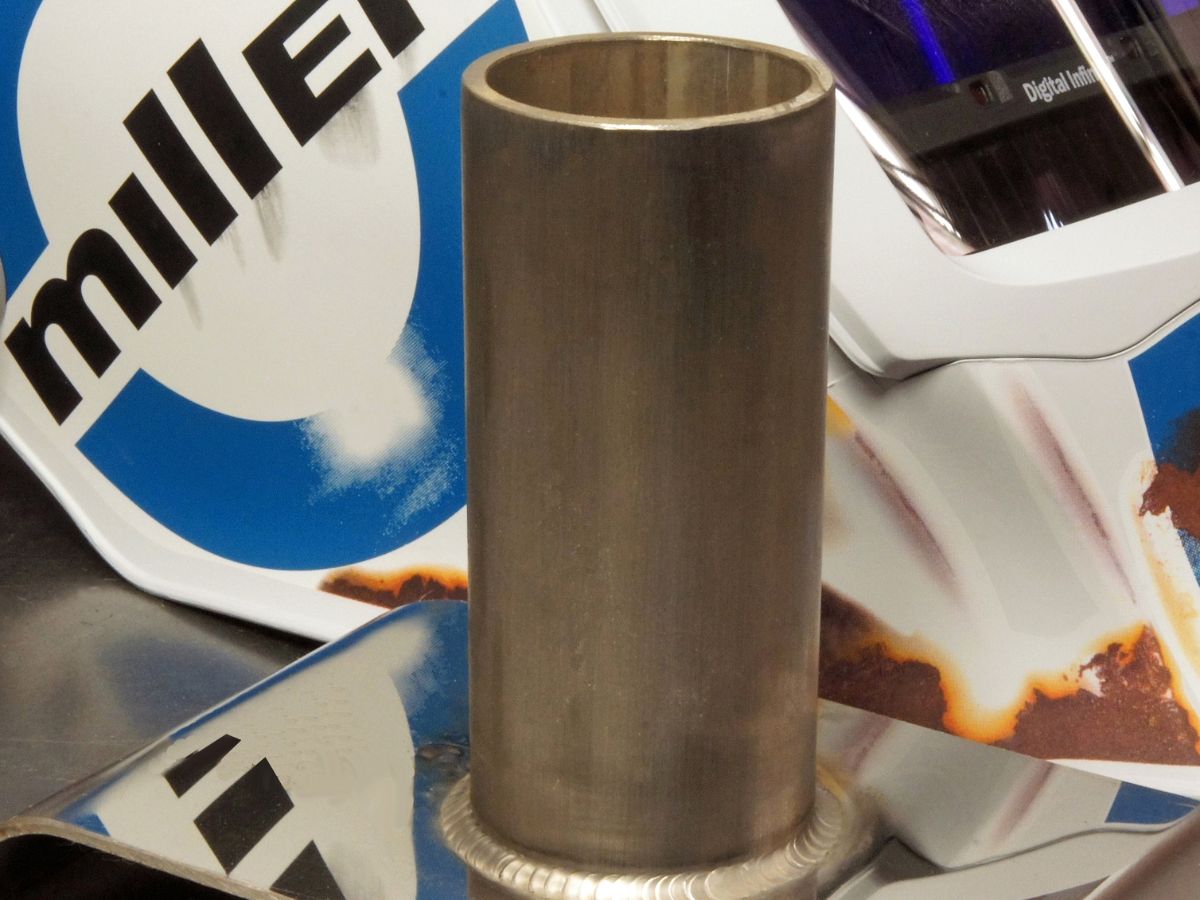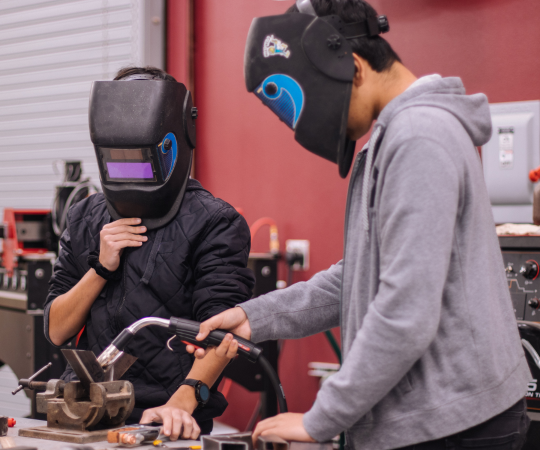Introduction
Welding is a cornerstone of metal fabrication and construction, playing a pivotal role in various industries such as automotive, residential, commercial, and artistic applications. As technology advances, the techniques of welding have evolved significantly. Among these methods, Stick (SMAW), MIG (GMAW), and TIG (GTAW) are the most popular. Each method has its own unique advantages and applications that cater to different needs. In this article, we will dive deep into the world of welding by comparing these three techniques: Stick, MIG, and TIG. We aim to provide insights that can help you make informed decisions whether you're considering residential welding projects or commercial welding tasks.
Stick Welding: An Overview
What is Stick Welding?
Stick welding, also known as Shielded Metal Arc Welding (SMAW), is one of the oldest and most straightforward welding techniques. It employs an electrode coated in flux to create an arc between the electrode and the workpiece. The heat generated melts both the electrode and the base metal, resulting in a strong weld.
Applications of Stick Welding
Residential Welding:
Stick welding is often utilized in home repair projects due to its portability and simplicity. You can easily weld various metals like steel or cast iron without needing complex equipment.
Commercial Welding:
In commercial settings, stick welding is ideal for heavy fabrication jobs where strength is paramount.
Advantages of Stick Welding
Versatility:
Can be used on various metals including steel and iron.
Portability:
Equipment can be easily transported to different job sites.
Cost-Effective:
Generally requires less investment in equipment compared to other methods.
Limitations of Stick Welding
Slower Process:
Compared to MIG and TIG methods.

Higher Skill Level Required:
It takes practice to master stick welding effectively.
MIG Welding: An Overview
What is MIG Welding?
MIG welding stands for Metal Inert Gas welding and is also known as Gas Metal Arc Welding (GMAW). This process involves feeding a continuous wire electrode through a gun while shielding it with inert gas—usually argon or helium—to protect the weld pool from contaminants.
Applications of MIG Welding
Auto Welding Repair:
MIG welding is commonly used in auto body shops for its speed and efficiency in repairs.
Custom Welding Projects:
It's perfect for custom fabrication projects due to its versatility in handling various materials.
Advantages of MIG Welding
Speedy Process:
The continuous feeding of wire makes it quicker than stick welding.
Less Skill Required:
Easier for beginners since it provides consistent results with less practice.
Cleaner Welds:
Produces less slag compared to stick welding.
Limitations of MIG Welding
Equipment Cost:
Generally requires more expensive equipment and setup.
Less Effective Outdoors:
Wind can disrupt the shielding gas flow leading to impurities in the weld.
TIG Welding: An Overview
What is TIG Welding?
TIG stands for Tungsten Inert Gas welding which involves using a non-consumable tungsten electrode to produce the weld while a filler material may be added separately if needed. An inert gas—most commonly argon—protects the weld area from atmospheric contamination.

Applications of TIG Welding
Metal Fabrication Projects:
TIG welding excels in creating intricate designs due to its precision capabilities.
Artistic Applications:
Artists often use TIG for sculptures or decorative items owing to its fine control over heat input.
Advantages of TIG Welding
High Precision:
Offers excellent control over heat input making it suitable for thin materials.
No Slag Formation:
Results in cleaner finishes which are aesthetically pleasing.
Versatile Material Compatibility:
Can be used on all types of metals including aluminum and stainless steel.
Limitations of TIG Welding
Slower Speed:
Typically takes longer than MIG due to manual feeding processes.
Requires High Skill Level:
Mastering this technique demands extensive practice and experience.
Stick, MIG, TIG: Comparing Popular Welding Techniques – Key Differences
| Feature | Stick (SMAW) xpress mobile welding https://xpressmobilewelding.com https://xpressmobilewelding.com/about/ https://xpressmobilewelding.com/contact/ | MIG (GMAW) | TIG (GTAW) | |--------------------|-------------------------|-----------------------|--------------------------| | Ease of Use | Moderate | Easy | Difficult | | Speed | Slow | Fast | Moderate | | Equipment Cost | Low | Moderate | High | | Portability | High | Moderate | Low | | Quality | Variable | Good | Excellent |
Choosing the Right Technique: Factors to Consider
When deciding between Stick, MIG, or TIG welding techniques, consider the following factors:
- What type of material are you working with? Do you require high-quality aesthetics or just functional strength? Are you working indoors or outdoors? What’s your budget?
Each situation may call for a different approach based on these considerations.
Understanding Common Mistakes in Different Techniques
1. Common Mistakes in Stick Welding
- Not adjusting amperage correctly leading to burn-throughs. Poor joint preparation causing weak welds. Ignoring safety practices leading to accidents.
2. Common Mistakes in MIG Welding
- Incorrect wire feed speed resulting in burnbacks or poor penetration. Failing to clean surfaces properly before starting. Not accounting for wind during outdoor work affecting gas shielding.
3. Common Mistakes in TIG Welding
- Improper filler rod feeding causing issues with fusion. Overheating materials leading to warping or burn-throughs. Neglecting gas flow rates which could compromise weld quality.
The Importance of Proper Equipment Selection
Having the right equipment plays a critical role regardless of whether you're pursuing residential welding projects or larger commercial tasks:
Ensure your power supply matches your selected technique's requirements. Invest in quality electrodes specific for each technique—stick rods differ from those used for MIG or TIG processes. Understand each technique's safety gear needs; PPE varies depending on exposure risks involved with each method.FAQs About Stick, MIG, and TIG Welding
Q1: What should I choose between Stick, MIG, or TIG?
A1: It largely depends on your project requirements; if speed is essential go with MIG; if precision matters most then opt for TIG; while stick offers versatility at lower costs.
Q2: Can I use these techniques outside?
A2: Yes! But pay attention; stick works well outdoors but wind can affect both MIG and TIG effectiveness unless precautions are taken like windbreakers.

Q3: How do I improve my skills quickly?
A3: Practice regularly while focusing on specific aspects like joint preparation or correct feed rates depending on your chosen technique!
Q4: Is certification necessary for professional welders?
A4: Yes! Obtaining certifications demonstrates competence which employers often require especially within industries subjecting workers under strict regulations!
Q5: What safety gear do I need?
A5: At minimum invest in gloves that resist heat & cuts along with helmets featuring appropriate lens shading fitted appropriately per job requirement!
Q6: Can I combine these techniques?
A6: Absolutely! Many professional welders utilize multiple methods within complex projects enhancing overall quality & efficiency achieved through diverse approaches!
Conclusion
In summary, understanding "Stick, MIG, TIG: Comparing Popular Welding Techniques" equips you with vital knowledge when embarking on any metalworking project—be it residential welding applications like DIY repairs at home or tackling large-scale commercial undertakings requiring expertise! Each method has unique attributes tailored toward specific needs so consider what suits you best based upon criteria discussed throughout this guide! By mastering these techniques alongside adhering strictly towards safety protocols ensures success not only enhances project outcomes but also strengthens career prospects within this booming industry field!